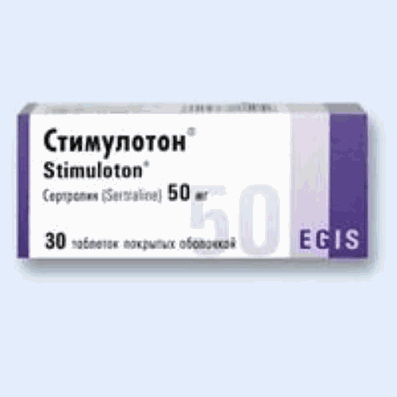Modern studies of Amyotrophic lateral sclerosis
26 Dec 2016
Neurologist Dr. Doping tells about corpuscles Bunin, the impact of stress on neurons and gene mutation in neurodegenerative diseases.
Amyotrophic lateral sclerosis - a severe neurological disease that is characterized by progressive loss of neurons responsible for movement and thought processes. It manifested it gradual muscle weakness. The person loses the ability to move his arms, legs, impaired breathing and speech. A few words about the history of this disease. The first description of the structure of motor and sensory waves that come within the nervous system, was done in the 30s of the XVIII century, when Magendie described this division. Until now, it is a fundamental principle of the anatomy of the nervous system.
n the future, it has been described by a number of cases where the death of nerve cells caused muscle weakness, atrophy and paralysis in humans. In those days it was not obvious that the weakness may be caused by damage to the nervous system at different levels: at the nerve cell level in the brain, spinal cord, peripheral nerve cells, and therefore those descriptions, which combined clinical and anatomical studies have been published and widely discussed. As a result, all the glory from the description of ALS as the disease got famous neurologist Charcot, who in 1874 identified the disease as an independent unit, and said that progressive muscular paralysis with atrophy caused by the death of nerve cells in the brain and spinal cord, are called amyotrophic lateral sclerosis. Now it is his description. Kozhevnikov The first description was made in Russia in 1883. Important national contribution to the study of this disease was to describe the so-called cells Bunin - is oxyphilous activate nerve cells - in 1962. These inclusions are still studied and described in all textbooks - both domestic and international - under the eponym "Bunin calf."
Interestingly, in the definition of the disease appear the word that is the death of cells responsible for movement. In fact, if you deeply understand the problem, it is not about individual cells, but the cells of the system. Even Charcot suggested that, having been born in one part of the nervous system, the disease is spreading in several of its departments. Then we necropsy found that the characteristic intracellular inclusions formed neurons in the motor cells, and the cells of the frontal lobe, responsible for planning actions for thinking. Then clinical descriptions have confirmed that these people are memory disorders - not only for the movement responsible damaged elements of the nervous system. Then geneticists have shown that the same mutations can lead some people to the movement disorders, while others - the memory disorders. Then came the researchers, who tied it into a kind of evolutionary theory and said that the BAS system are damaged, which has consistently developed in the framework of evolution, namely responsible for the grasping hand movements, walking upright, speaking and socializing.
To improve brain functions use Cogitum, Semax, Noopept, Phenylpiracetam.
Traditionally, the mechanisms that are responsible for the emergence and development of the disease include toxicity, oxidative stress, disturbance of axonal transport, a lack of neurotrophic factors. But nevertheless it is still not entirely clear why the disease develops in adulthood. Why do some patients with the same mutation in the disease appears, and the disease does not develop their relatives? In 2014 he published an article that analyzed quite common known epidemiological data and made the assumption that the ALS is a multistep process. To people sick, you need to go through 6 stages. This means that the mechanism of disease, each of these mechanisms play a role, but it can not run on their own process. This greatly complicates the study when it is necessary in some human populations to identify not just one factor that leads monogenic disease, and when it is necessary to identify the presence of a combination of this gene with certain environmental factors. Nevertheless, these factors continue to be studied. For environmental factors include smoking, physical activity, injury, participation in armed conflicts, pesticides, some others. As for genetic factors that are considered launchers in this disease, they are known to date, approximately 10% of all people who suffer from this disease. We can talk about 20-25 genes that increase the predisposition of the disease. Four of them are the most common: the SOD1 gene, first open in this disease, TDP43 gene, and the FUS gene C9orf72 gene, which was opened in 2011 and has led to a rethinking of the mechanisms of this disease.
Now we will talk about how to change our understanding of the mechanisms of development of the disease after the discovery of mutations in the gene C9orf72. Mutation of this hidden due to the fact that it is located in the intron of the gene. And this mutation refers to the expansion of the hexa-nucleotide repeats, ie, needed specific genetic methods to detect this mutation. How does it work? Apparently, due its pathological effect in that on the basis of DNA in which an excess amount of hexa-nucleotide repeats accumulates to a few thousand as compared with 20 normal, several thousands of repetitions, that is, words that are recorded within the genome correctly but they obsessively repeated. The result is an excess portion of the RNA that does not encode any protein. Why think so? Because there is no so-called start-codon, which begins with the protein translation.
But it turned out that there is a mechanism by which the protein can be broadcast in the absence of the start codon. The result is a protein consisting of the b-peptides which may be toxic and in this disease. What can these proteins? They are formed in the cytoplasm and bind to RNA, which is also in the cytoplasm are located there for the translation process. As a result of impaired interaction with other proteins of RNA. Critical, apparently, it becomes in a stressful situation, because it is known that in neurons under stress - asthmatic stress or stress in the form of increased temperature or oxidative stress - the stress granules are formed. This aggregation link RNA to proteins. These proteins with prion sequences protect RNA from degradation by proteases, making it more resistant to stress. Then the stress granules at the end of the stress decay, and extend all the processes associated with the formation of proteins, RNA transport.
So, these bi-peptide proteins that are produced in excess RNA, blocking the dynamics of stress granules, and do not break after the stress is finished. As a result, they accumulate within the cytoplasm of cells, and they contain a variety of proteins. All this repeatedly confirmed histologically. These are the inclusions that are typical for this disease. What do we get? Neuron affected by stress, can not be restored - this is the first problem, that is, can not go on the formation of proteins from RNA. The second problem - when proteolysis resistant accumulate inside the cell clusters, which include various RNA proteins, and this in turn triggers a series of pathological processes.
Modern research to find treatments focused on the processes associated with the formation of a bi-peptide proteins, ie they block the pathological broadcast. They just stop it with the C9orf72 gene. It is known that a complete blockade of the formation of this protein is not lethal to cells and, as shown by experiments, slows down or completely stop the disease in animals that have this mutation, and without such a treatment would be sick bass, but with treatment, this process stops. On the basis of these studies, carried out a search for new disease markers, because there is a search for methods of these bi-peptide proteins in the cerebrospinal fluid. This marker can be used both for diagnosis and for monitoring treatment of disease. If the amount of treatment by the action of the bi-peptide proteins decreases, then the treatment is effective. This makes it possible to accelerate clinical research.
Now one of the basic models of disease - a model for pluripotent stem cells, when the patient ALS mutation C9orf72 taken, for example, fibroblast, i.e. a piece of skin, and is under the influence of special factors converted into neurons, which also suffer from his own neurons. And research on these neurons allow to accelerate new drug discovery process as we can test drugs in much larger quantities and much faster than we could do it on a human. That is, the discovery of this mutation has allowed us to move forward in the development of models of disease and in the development of markers for the diagnosis and monitoring of treatment and the search for new treatments for themselves. And it confirmed the existence of a relatively new and newly discovered mechanisms of broadcasting without a start codon. Science has made thanks to the disease a significant step forward, and we hope that it will be effective in relation to drug discovery.

 Cart
Cart





